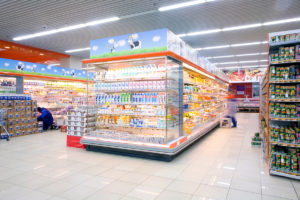With so much going on in the world right now, it’s inevitable that current events are having – and will continue to have – an influence on the spice and ingredient market. In our latest blog, our senior purchasing manager and expert in ever-changing market conditions, Justin Silvia, offers his insights into how exactly current events are shaping the market.
From inflation to international conflicts, changes to the spice and ingredient market have been swift and impactful. A variety of current events have contributed to shortages, shipping delays, and rising prices across the industry. Some of these events are likely to only have an impact in the short-term, while others will likely continue to influence the market for years to come. Keep reading for a closer look at how current events are shaping the spice and ingredient market.
Inflation

Inflation: it’s the topic that’s been on everyone’s minds lately. And how can it not be? With prices going up at the pump, the grocery store, and just about everywhere else, inflation has made waves, having a significant impact on households and businesses alike. The United States CPI index, the primary gauge of domestic inflation, hit a high of 9.1% in June and is projected to be up 8.5% at the end of 2022 vs 2021 prices.
The food industry has been hit by rising costs even more so than the general basket of goods that comprise the popular CPI index. For the 17th straight month food indices increased and at a +9.4% 12-month delta. Food consumed at home is up +10.8% over that same period of time, and given the prices at supermarket shelves, this is hardly surprising to most. Dairy is the top driver of this spike, with meats, poultry fish and eggs also a significant contributor.
The rising prices of oil and gasoline have been a significant driver of inflation as well, leading to rising transportation costs, which have undoubtedly had a negative impact on the ingredient market. Adverse weather & growing conditions, higher material & operational costs, and secondary market premiums are also contributing inflationary factors on ingredients and spices that are not going away any time soon.
Issues Overseas

It’s a small world; a conflict or shortage somewhere far away can have a major impact on global markets. For example, labor shortages in the Port of Colombo in the spring have led to substantial delays for suppliers, as this port is a significant transshipment terminal for containers leaving India bound for the United States. The longer it persists, the larger the impact.
Perhaps the international event with the most substantial impact on the industry recently is the Russia-Ukraine crisis. Since February, this crisis has disrupted the ingredient supply chain, as Ukraine is a major global producer and exporter of wheat and grains. This has inevitably led to shortages, delays, and price increases.
Natural, Environmental, and Climate-Related Factors
Adverse weather conditions, some of which have been spurred by climate change, have led to poor growing conditions for many crops. The weather in the upper Midwest has not been good for the early sugar beet plantings, for example, contributing to the increasingly volatile sugar market.
As the cumin harvest wraps up, overall yields are settling somewhere between 30 and 40% lower than last year due to a drop in sowing acreage, adverse weather, low yields, and pest infestations in India. The threat of weather and other natural events impacting crops is ever-present. The oregano market is being closely watched as a result. As Mediterranean and Mexican growing areas progress through their growing seasons, rainfall, pests, and micro risks are always present. Last year’s Mexican crop has left carryover material harder to come by, driving up the secondary market.
COVID-19 & Public Health
Over two years into the pandemic, and we’re still seeing the impacts of COVID-19 on the market. Most notably, port closures in Shanghai due to lockdowns caused significant delays and supply chain disruptions in the spring. Although the port lockdowns have concluded, the backlog that has accrued is significant and will continue to have ripple effects as Chinese container throughput dropped 25% in April. It is yet to be seen how rumblings of a new public health threat, monkeypox, will impact the market.
Need help navigating the ever-changing market? Our experts are here for you. Contact us today to collaborate with our team.


